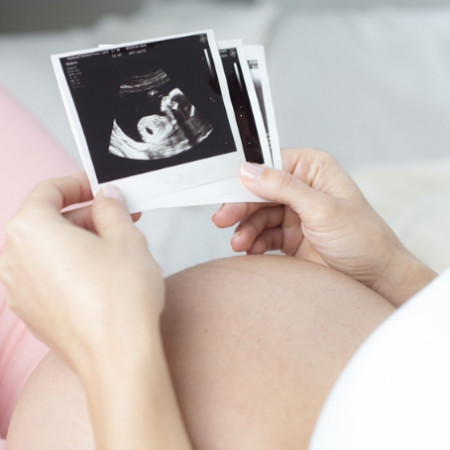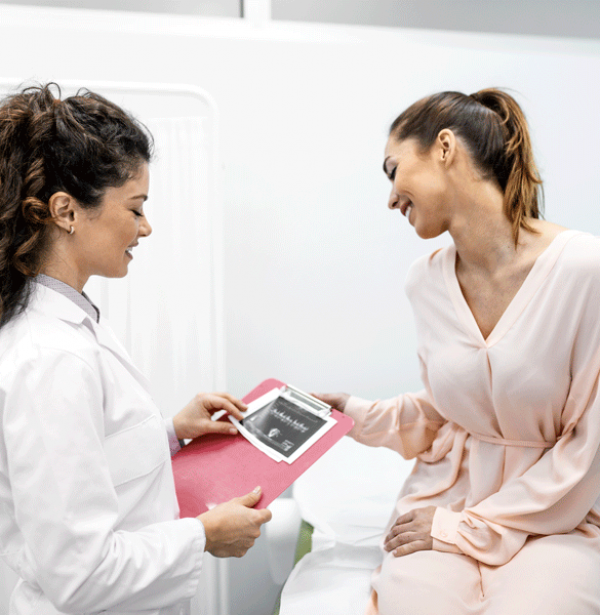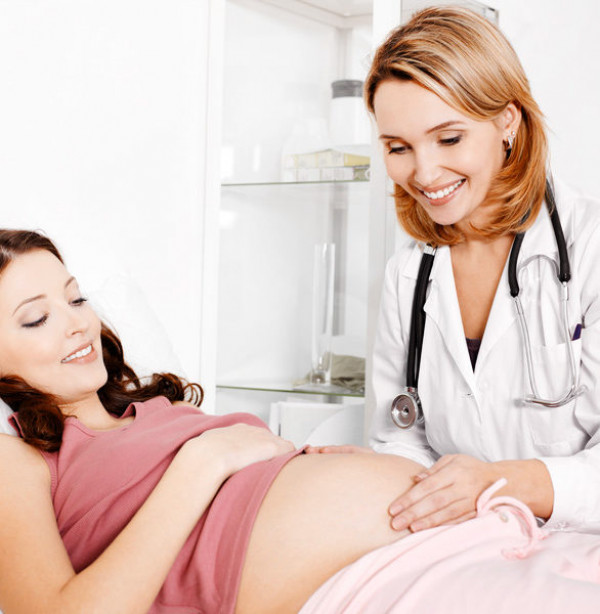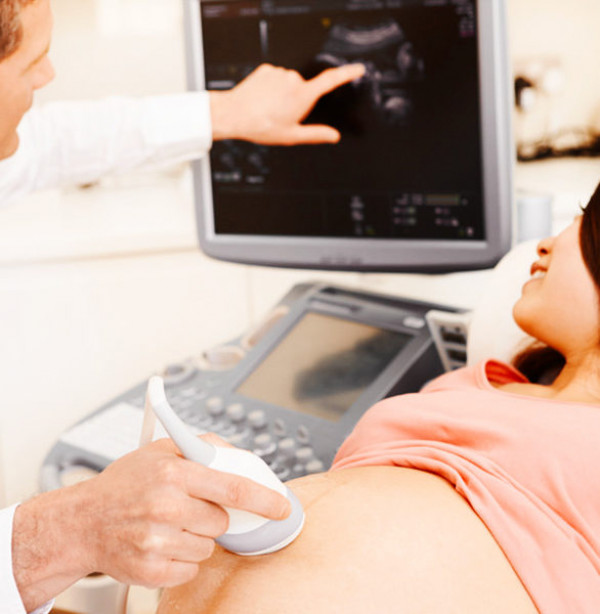
Every stage of my pregnancy
Month by month
Pregnancy is both an exciting and a disruptive time. Many of your habits and references will change. You will have 9 months to prepare for parenthood. 9 months of patient, healthy living, as you wait to finally hold your baby in your arms.

9 months in mummy’s tummy
During the 36 weeks of your pregnancy, your baby will beat every growth record: from the cellular stage, she will eventually measure about 50 cm for 3.3 kg at birth.
The doctor who will monitor your pregnancy will be able to inform you, answer your questions, monitor your baby’s development in utero and explain her evolution.
Your baby’s evolution month by month
Your egg becomes an embryo, and then a foetus. As it grows, its organs are formed by combining the genetic information of both parents.
Your child is surrounded in amniotic fluid. She does not breathe or eat. Her every need and every exchange occur through the placenta, which receives oxygen, releases carbon dioxide, and taps into your reserves for nourishment and growth.
However, this period can be a bit unpleasant for you: in addition to morning sickness, you may be more irritable, tired, and sleepy. Be patient, it will get better!

- Weight and height at 4 weeks
 0.02g
0.02g 0.5cm
0.5cmIn 4 weeks, the egg has attached to the uterine wall. Its cells are multiplying rapidly. The placenta is being formed.
- Weight and height at 8 weeks
 3g
3g 3cm
3cmAt 6 weeks, the limbs start developing. The brain and eyes are shaped. From this stage on, your baby is called a foetus.
- Weight and height at 12 weeks
 45g
45g 10cm
10cmFacial features become more defined. The organs (kidneys, liver, intestines) are formed. The spine ossifies. It is now possible to tell if the baby is a boy or a girl. Baby moves, but Mum can’t feel her yet.
Your pregnancy is increasingly visible and your status changes: people now see you as a future mum.
Your tummy gets bigger, and you will soon be able to feel your baby moving. Morning sickness abates. Your skin pigmentation increases and a vertical line may appear on your tummy.

- Weight and height at 16 weeks
 200g
200g 19cm
19cmYour baby’s organs, such as the digestive system, are now formed and start working. Her heart beats twice as fast as yours. Her brain is actively maturing. Veins draw from her very fine skin, which becomes covered in a downy coating of hair.
- Weight and height at 20 weeks
 500g
500g 25cm
25cmYou can now feel her moving! You will feel light bumps, which will get stronger, especially at night or when you are relaxing. Baby gulps her amniotic fluid to practise breathing and swallowing. Her skin still lacks subcutaneous fat and is all wrinkly.
- Weight and height at 24 weeks
 870g
870g 33cm
33cmBaby becomes very active, with up to 20–60 movements per half-hour. This does not mean that she will be restless after birth. Babies sleep in cycles of 16 to 20 hours a day. If you don’t feel any movement in more than 24 hours, check in with your doctor. Though it may feel as if she has hiccoughs, these are actually reflex movements in her diaphragm.
Your impatience may be growing as you near these last months. You may have already chosen a name, decorated baby’s room, and packed your maternity bag.

- Weight and height at 28 weeks
 1.5kg
1.5kg 37cm
37cmBaby’s senses are awakening. She has sensations, perceives sounds, lights, tastes, and even smells. While she continues to grow, her movements are becoming more precise; she can make fists, sucks her thumb, and reacts to your moods. Baby starts to connect with you. She can recognise your voice and her dad’s. The time has come to sing lullabies: the ones she will have heard in your tummy will soothe her after birth.
- Weight and height at 32 weeks
 2.2kg
2.2kg 43cm
43cmHer skin becomes smoother, and her body fills out. The organs now work; her heart and lungs are nearing maturity. She shifts, usually taking a head-down position.
- Weight and height at 36 weeks
 3.3kg
3.3kg 50cm
50cmBaby grows just a few more centimetres, adding the last grammes to the soft parts of her body, which will not hinder her birth, such as the arms, tummy, and thighs. The bones of her skull have not solidified, which will make it easier for her head to pass through her mother’s pelvis.
Our answers to your questions
-
It is believed to be triggered by hormonal variations in early pregnancy, but its exact cause is not clear. Some women don’t experience it at all. The right approach: Make sure your tummy isn’t empty for too long. Avoid strong smells that can make you feel queasy. If your nausea becomes too unpleasant, speak to your doctor. Good news! It tends to disappear in the 12th week of pregnancy.
-
Feeling fatigued is caused by progesterone, a hormone that is produced in large quantities during pregnancy. During the first months, the mere sight of a pillow will put you to sleep. In the last months, insomnia may become the issue instead. Don’t resist sleep. Get a few extra hours of sleep whenever you can, as your body needs the rest to fully experience this great adventure.
-
Again, you will have 9 months to prepare for this. Twin pregnancies are not massively different from classic pregnancies. Naturally, Mum will gain on average 3 to 4 extra kilos. With less space in the tummy, babies will be born earlier. But rest assured, this is generally just a fortnight before the birth of a mature single foetus.
Being well prepared!
Check out our suggestions on baby equipment and things to pack in your maternity bag.
Antenatal tests
Antenatal tests and ultrasounds are opportunities for regular check-ups with your doctor, to make sure that your pregnancy is going well.

Your 1st visit
It should occur before the end of your 3rd month of pregnancy, to be repeated monthly until the 8th month.
What is always monitored? Your weight and blood pressure. A urine test is also done to look for protein (albumin) and sugar (glucose), and detect any kidney or diabetes issues.
Your first appointment will involve a chat to assess your specific context and plan for appropriate monitoring. It will cover the medical history of both parents along with your environment and lifestyle.
Your doctor will prescribe a blood test to check your sugar (glycaemia) and iron (ferritin) levels, determine your blood group, and determine if you are immune to certain diseases (toxoplasmosis, rubella). In the absence of antibodies, you will need to attend monthly blood tests.
You will be offered a 1st ultrasound when you are about 12 weeks pregnant.
This scan will help determine:
- The actual onset of pregnancy
- Your expected due date
The doctor will monitor:
- How the pregnancy is progressing
- Foetal growth
This appointment will also involve a nuchal transparency, a measurement that is factored in to detect Down’s syndrome.
It is advisable to wait for the results of this 1st scan before declaring your pregnancy.

Second trimester
4th month appointment
Measuring your uterus, checking your cervix, and listening to your baby’s heart are now also part of routine testing.
5th month appointment
This antenatal visit follows the same scenario. You will be offered a 2nd ultrasound when you are 22 weeks pregnant.
The ultrasound practitioner will assess your baby’s physical structure, making sure there are no anomalies in its formation, including the heart. Your baby’s growth will be monitored by measuring the diameter of her head and abdomen. This scan is aimed at ensuring that your baby is healthy, perfectly developed, and presenting well.
6th month appointment
Similar to previous appointments. It will now include hepatitis B screening, and screening for any iron deficiencies.
Your doctor will listen to your baby’s heart and monitor early signs of in utero activity and intensity.

Third trimester
7th month appointment
The same parameters are checked: weight, blood pressure, blood and urine tests, cervix, and uterus measurement.
8th month appointment
This appointment is like the others. A 3rd ultrasound will be scheduled when you are 32 weeks pregnant. With your due date fast approaching, you will follow the same protocol as for your 2nd ultrasound. Each time, you will take home pictures from your scan, which will give you a touching glimpse of your baby’s little face.
9th month appointment
Prepares you for birth. Your doctor will examine the shape and size of your pelvis, check your cervix and how your baby is presenting, and listen to her heartbeat. You will start talking about the most appropriate birth plan based on this information.
Our answers to your questions
-
This infectious disease is caused by a parasite. While it is usually benign, it can have serious consequences on babies of pregnant mothers who were not exposed to the parasite before their pregnancy.
How does contamination occur? You can get toxoplasmosis by eating infected raw meat, unwashed raw fruits and vegetables, and contaminated water. This is why it is best to eat well-cooked foods and to wash fruits and vegetables thoroughly. More rarely, the illness can also be transmitted from infected cat faeces. -
- A morphological examination of the baby: general observation of the foetus’s development and organs, and detecting any genetic anomalies and malformations.
- A biometric study of the foetus: monitoring growth by measuring the limbs, skull, and diameter of the abdomen.
- To check on the baby’s vitality: responsiveness, limb mobility, respiratory and cardiac motion, swallowing.
- To monitor the uterine environment: amniotic fluid volume and condition, placenta implantation and location.
-
These are painless and totally innocuous tests, both for you and for your baby.
Why? Because these scans use ultrasound technology, which can go through tissues, bounce on an obstacle, and come back transmitting extremely detailed images of the foetus and its organs. -
Beforehand: the practitioner will ask you not to apply creams, gels, or other substances on your abdomen the week before your scan.
You will also be asked to drink a lot of water to enlarge your bladder.
During the scan: the practitioner will apply gel on your skin and slide the ultrasound probe across the entire examination area.
This is a very moving moment; you will hear your baby’s heartbeat and see images of her.

